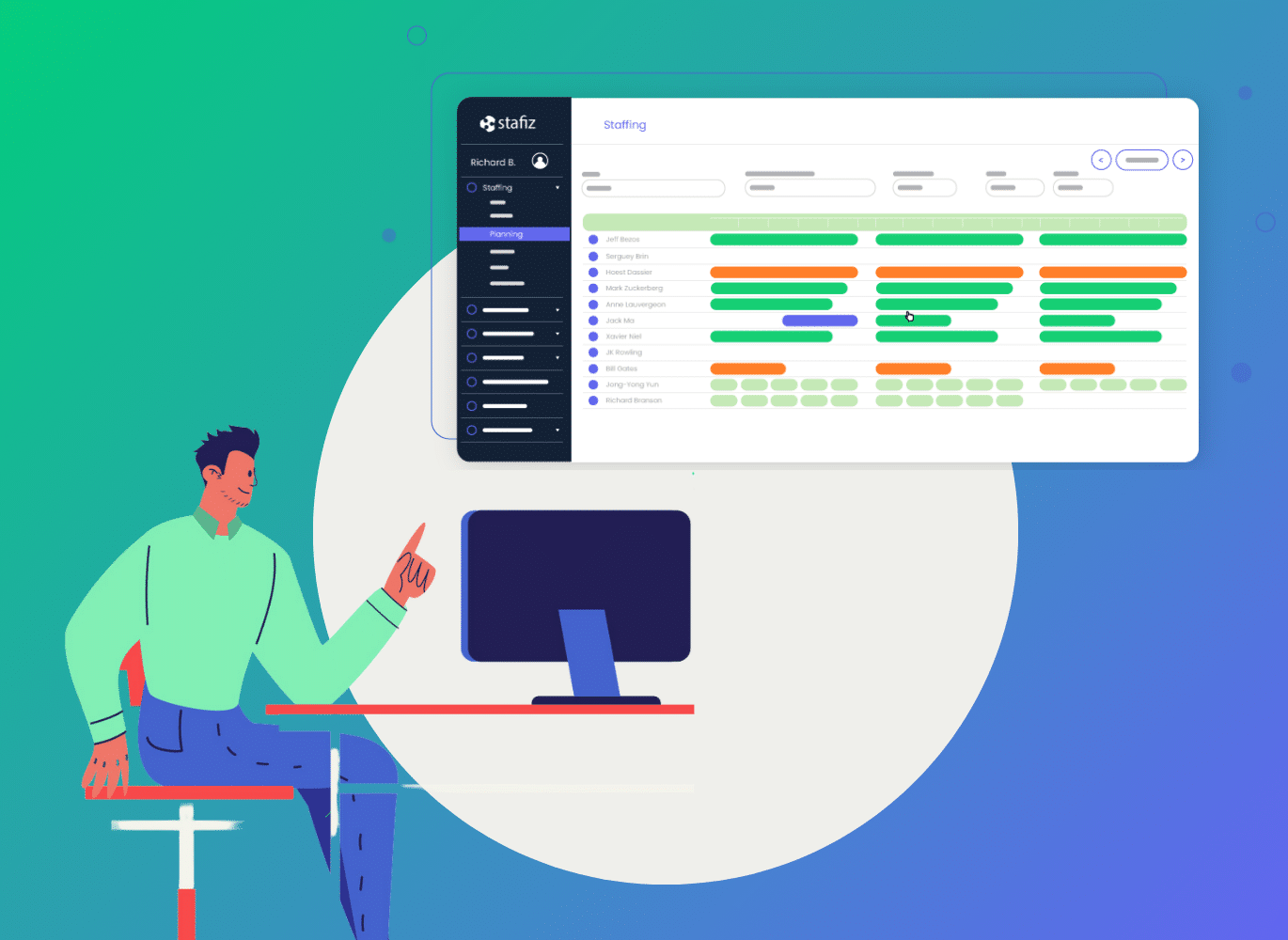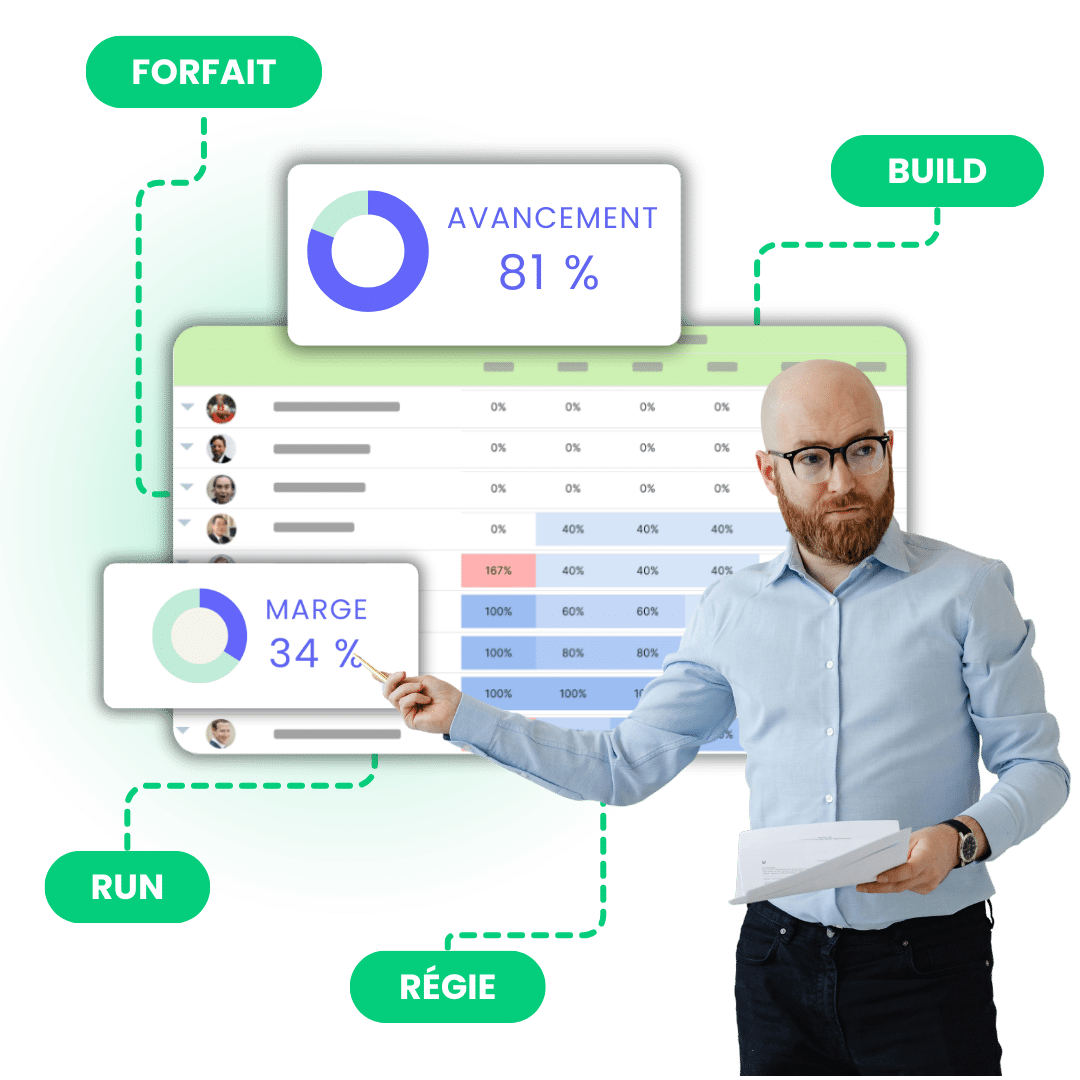How to choose the right resource planning tools?
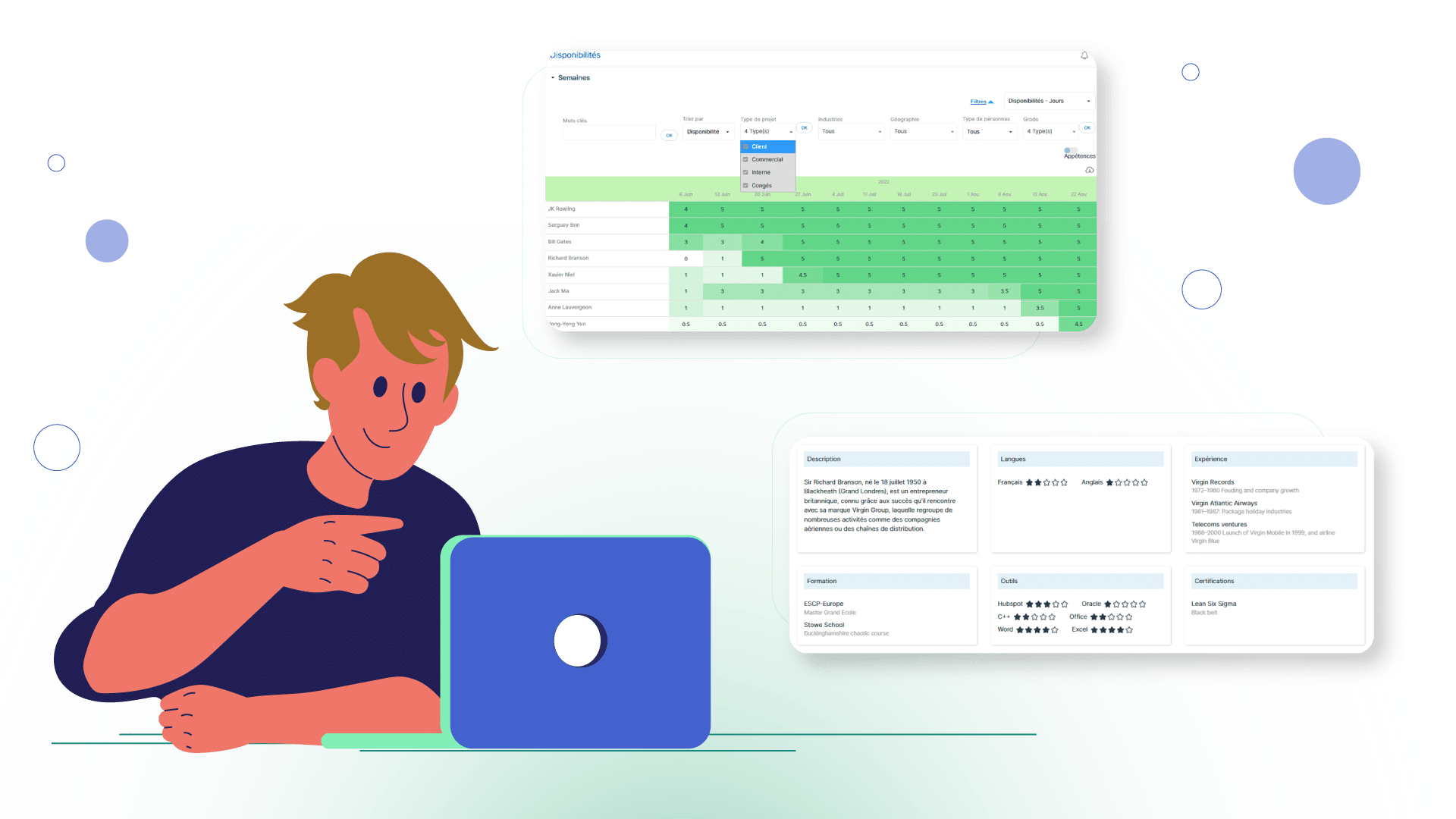
There are several resource planning tools on the market, but it's imperative to choose the one that is the most fitted for your business.
The workload schedule of a consulting company will be managed very differently from that of a warehouse or an association, for example.
Before setting your sights on a tool, you must first identify the solutions that are best suited to your needs and your industry.
What criteria should you take into account when purchasing a resource planner tool that's right for your business?
Common resource management features
A workload planning software must be able to recognize your employees.
To achieve this, you need to be able to register as much information as possible in the tool, to support your resource scheduling decisions.
Employee profiles creation
The easiest way to identify your employees is obviously to be able to create a profile for each of them.
It must contain at least the following data:
- the name,
- the first name,
- the name of the position he or she holds.
Optionally, if the software allows it, you can also include the date they joined the company, the department to which the position is attached, and even a profile picture.
Skills management
Your workload planning tool must be able to identify the information entered as such: the creation of a database is essential.
It is indeed essential to integrate the professional skills of your employees into their profiles in order to quickly identify whether or not a person is qualified to be assigned to a specific type of task, or even to a specific type of project.
Time recording and timesheet management
In order to monitor production in real time and analyze production reports, every good workload management tools must contain time and activity management parameters.
This allows us to compare the initial schedule to what has been achieved. Time entry can then be used as a reference to plan future projects, or analyze productivity.
- Leave and absences: to set up availability in accordance with legal obligations and the different types of contracts (half-time, fixed day).
- Time entry: It must be fast and adapted to your activity: an agency will need a fine granularity while a IT Services will want to position profiles over extended periods of time. Stafiz allows you to manage both options simultaneously.
Allocation of resources to tasks and projects
Profile search
The integration of skills and time management mentioned earlier will be useful for the task of assigning profiles to projects.
In fact, with a search bar you will be able to find the profile(s) corresponding to the qualifications and requirements needed to carry out a task.
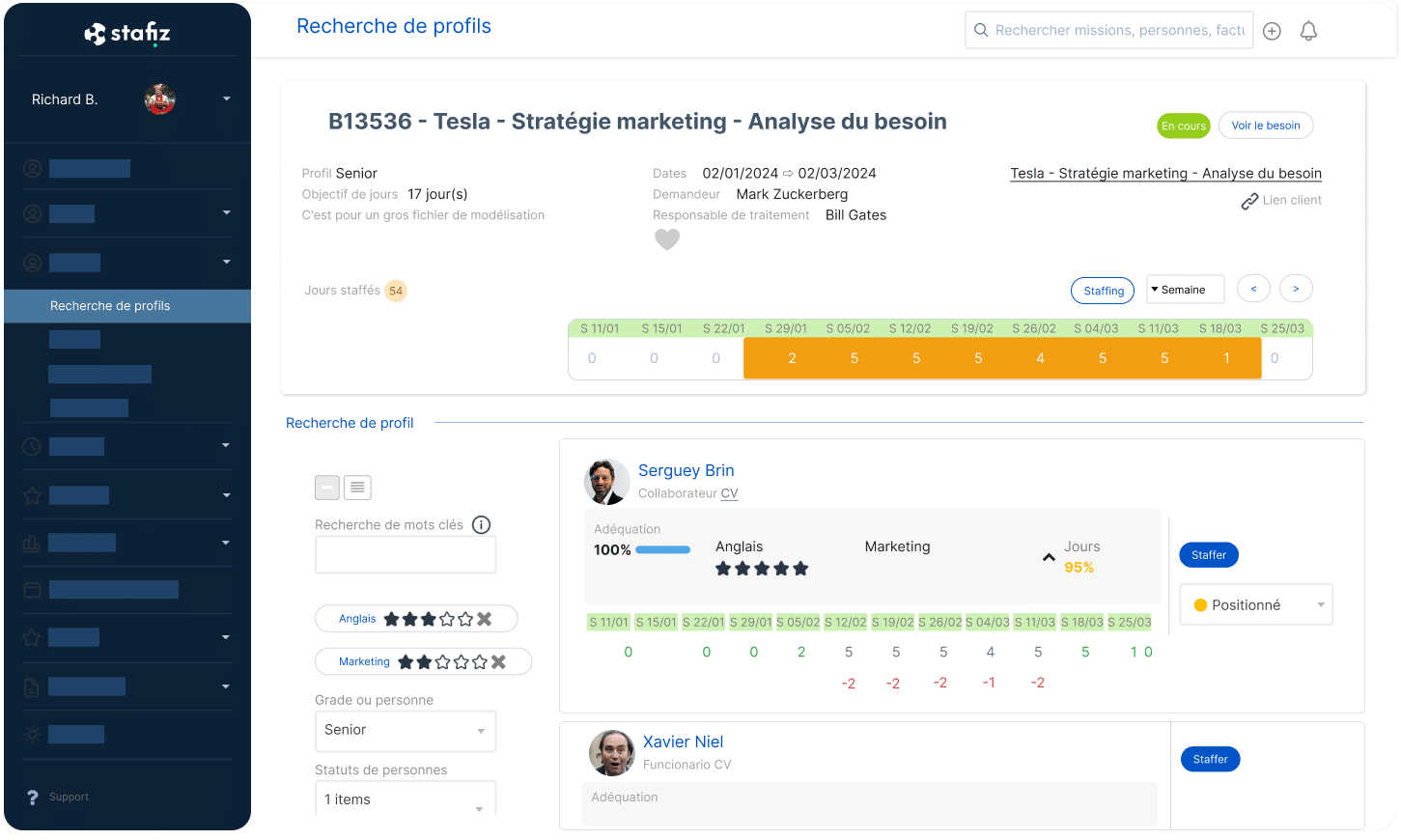
Stafiz's profile search engine allows you to assign qualified employees based on resource needs
The search engine must be able to take into account skills, but these search criteria can vary and complement each other.
The experience criterion
It is often useful to integrate experience into research: has this profile already participated in a project at this client? Has he ever worked on this type of project?
This allows you to refine the search with profiles already trained in the subject, and respond ever more effectively to a customer's needs.
It can also integrate your employees' preferences so that they can be mobilized for the skills they wish to develop or perfect, or the types of assignments they like.
The Availability Criterion
When you are looking to staff a profile it's usually for a fixed period.
But it is not necessarily full-time for the entire period: it can be on specific days or times, over a period but not 100%, or only on certain days of the week.
Cases vary, and your workload management software must enable you to meet these criteria.
It is also a way of not affecting a qualified profile but already positioned on another mission, or simply absent.
In particular, Stafiz allows you to create personalized categories that you can label and customize to suit your needs and processes.
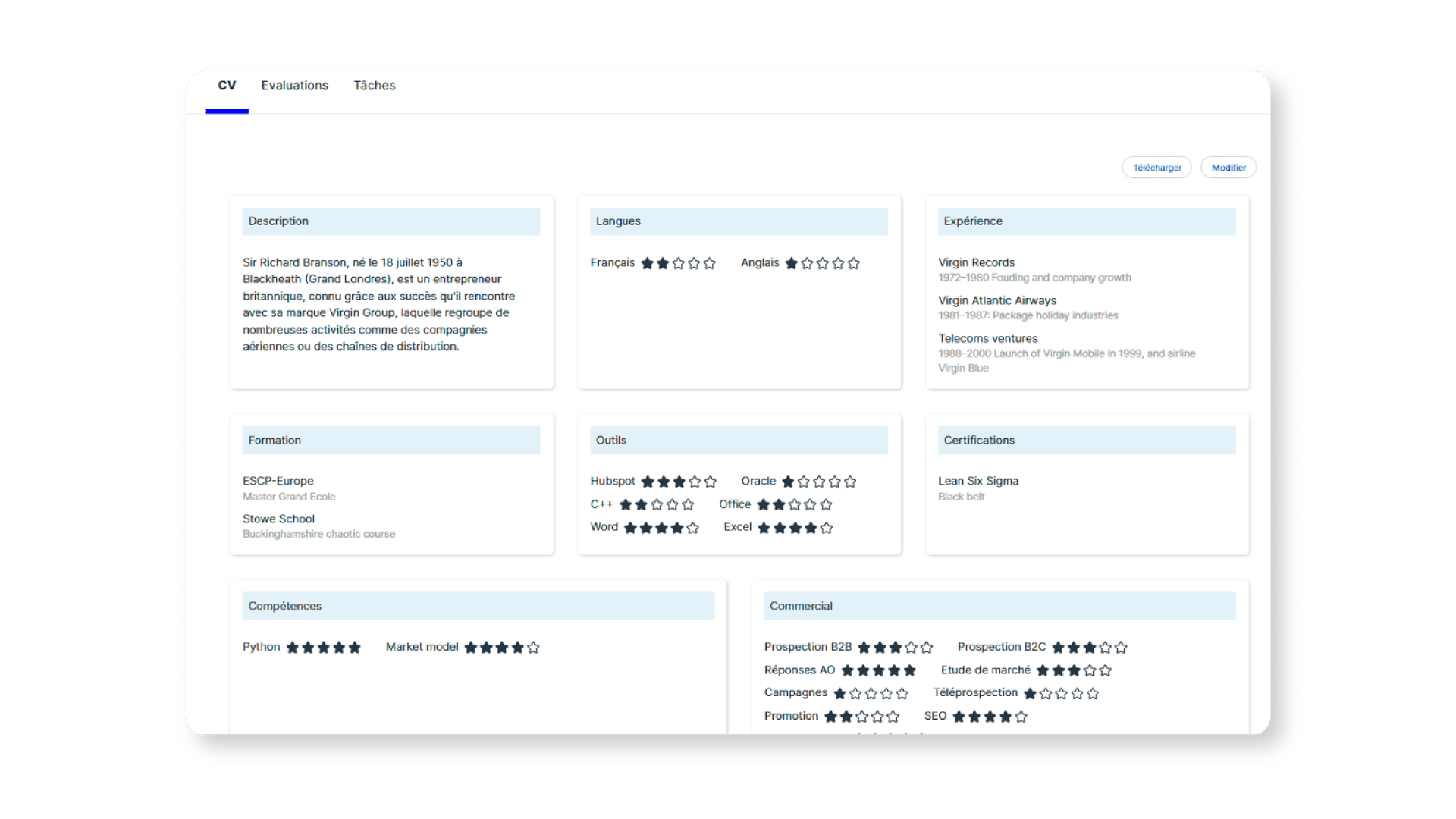
Here, the training, tools, and certifications categories are examples of custom categories
What's more, it can integrate your employees' preferences so that they can be mobilized for the skills they want to develop or perfect, or the types of assignments they like.
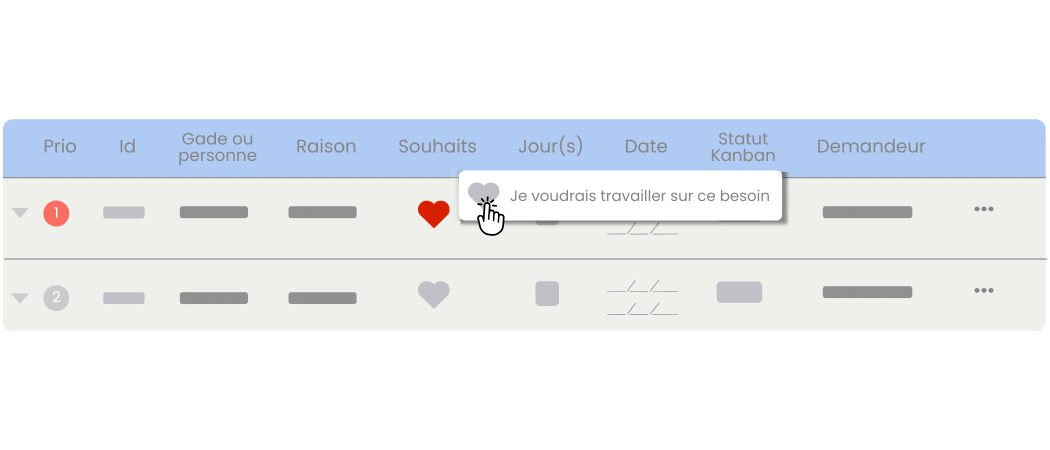
Employees with visibility into projects can indicate their interest.
And that's good for employee satisfaction!
Ease of resource allocation
To stay productive, resource allocation doesn't have to be a headache! That's probably one of the reasons why you've decided to swap your excel spreadsheets for the right software.
Stafiz allows a high degree of granularity in the timesheet filling from hours to half-days to full days.
You can edit your project schedules from different locations with just a few clicks to reduce time spent on navigation and technical planning.
Smart suggestions
With a solid and complete user database, you could save even more time and accuracy on your schedule development thanks to automatic suggestions.
Stafiz's Smart Matching is a great example. From the creation of a project or simply during a search, the available and most qualified candidates will be automatically presented, you will only have to validate your choices.
This algorithm has been designed to help you optimize your loading rates to help you gain in productivity.
Visibility into resource planning
Workload management tools must provide teams with full visibility: employees must have better visibility of their schedules, and managers must also be able to easily manage employee assignments project assignments and tasks.
Visibility for employees and connection with calendars
It is important to give the employee visibility on his or her schedule and objectives.
So when management assigns the employee to a project, the workload planning software must notify the employee or subcontractor.
Ideally, the briefing associated with this assignment complements the information on the schedule. Employees must be able to easily find out their schedule by logging in from their mobile application.
When the workload management software is also connected to the employee's visibility is even greater.
The workload management tools that connect to calendar apps enable workload schedule to be modified in both directions if necessary: from the tool to the diary and from the diary to the tool.
Visibility and management
On the management side, the global visibility are most valuable, allowing you to filter by role, by team, and to know who's assigned on which task.
The workload management tool must make it easy to reassign the workload from one employee to another, or to shift assignments from one date to another if the project falls behind schedule.
A clear view of the schedule, availability and loads must be available to project managers.
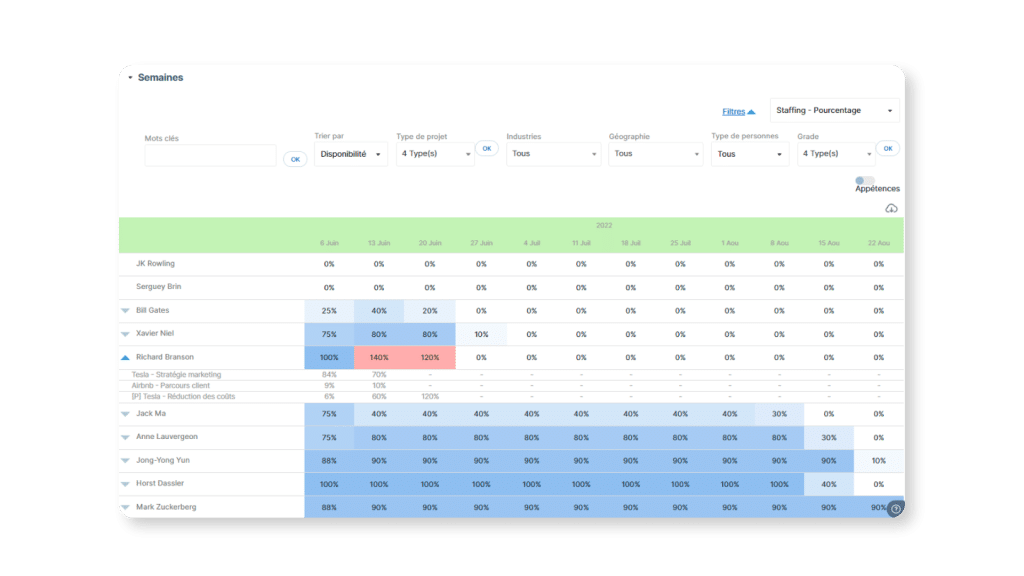
Load tracking in Stafiz gives your leadership team complete visibility into your teams' activity.
Rights management is very important here: how much visibility can the manager be given? All the company's profiles or just those of his team?
If your workload planning software allows, rights levels can be defined.
Workload and capacity features
A well-distributed and balanced workload is necessary to maintain the right level of productivity.
That's why your workload planner software needs to give you visibility in real time, but also in advance.
Workload balancing
To improve team efficiency and productivity, the key success factor lies in an optimized workload distribution.
This must be smoothed out as much as possible between employees to avoid bottlenecks and delays.
Being able to identify these workload problems at a glance enables managers to reorganize workload so that work is better distributed.
In addition to productivity gains, good workload management increases employee satisfaction. No more inconveniences caused by overload or lack of activity!
Workload planning scenarios
One of the major advantages of workload management tools is that they provide anticipation.
They give a vision of possible capacity shortages. It is then possible to decide what actions to take to fill these skills gaps: recruitment, training, collaboration with freelancers, etc. The possibilities are numerous!
They should make it possible to scenarioize future workloads by taking into account the whole of the occupation: customer projects, internal projects, absences, but also opportunities and projects that could be brought on stream.
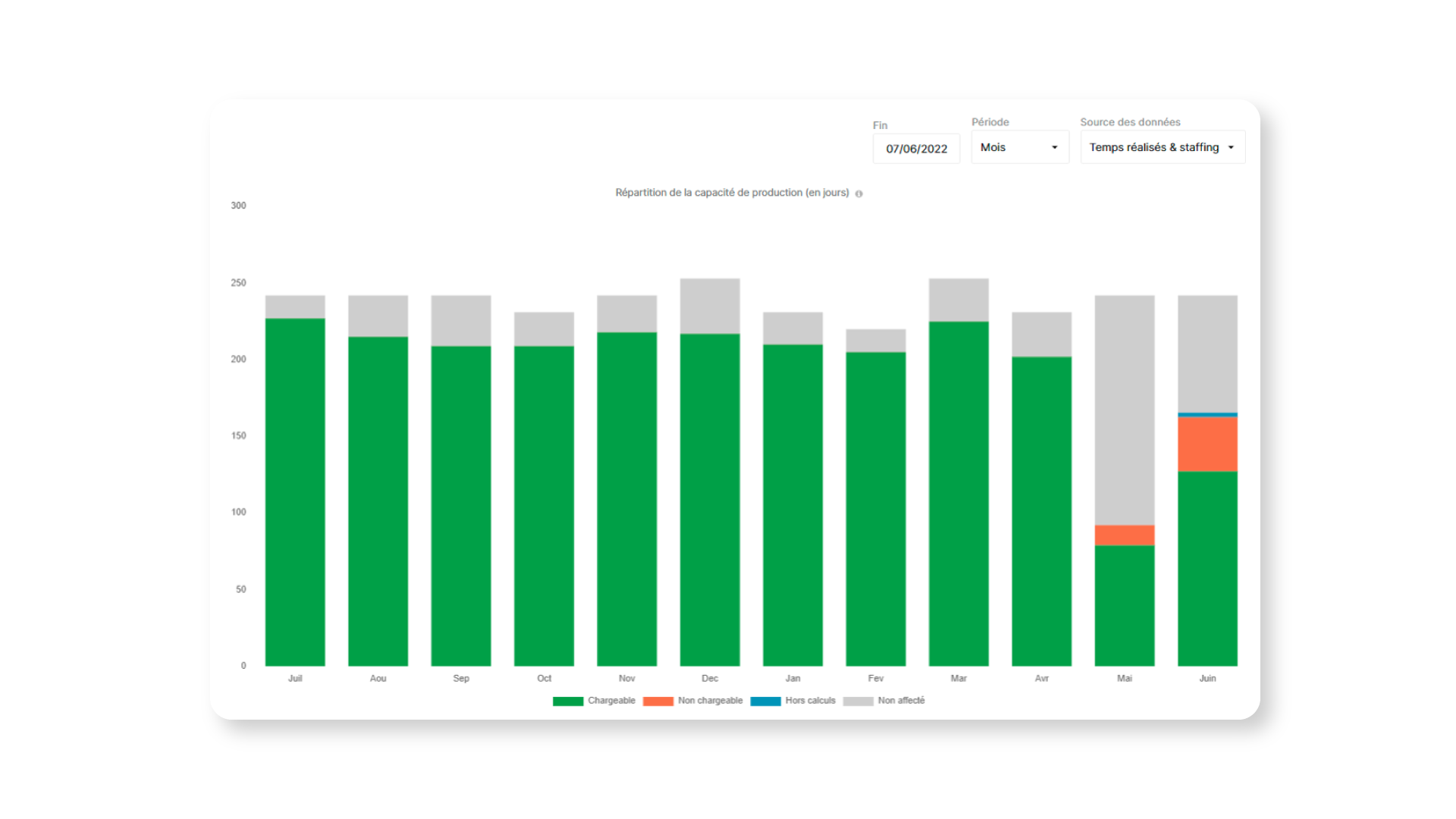
Visualization of the projected workload with consideration of projects with a certain percentage chance of being signed in pre-sales in Stafiz
Depending on the scope selected, the impact on the workload may change.
Ideally, you can pre-staff profiles on projects that are still in pre-sales. Depending on the percentage chance of success, the additional burden is taken into account.
You can thus read the projected charge by deciding whether or not to take into account the elements in pre-sales.
The creation of needs
Employees, whether they are sales representatives or project managers, must be able to create resource needs by meeting certain criteria.
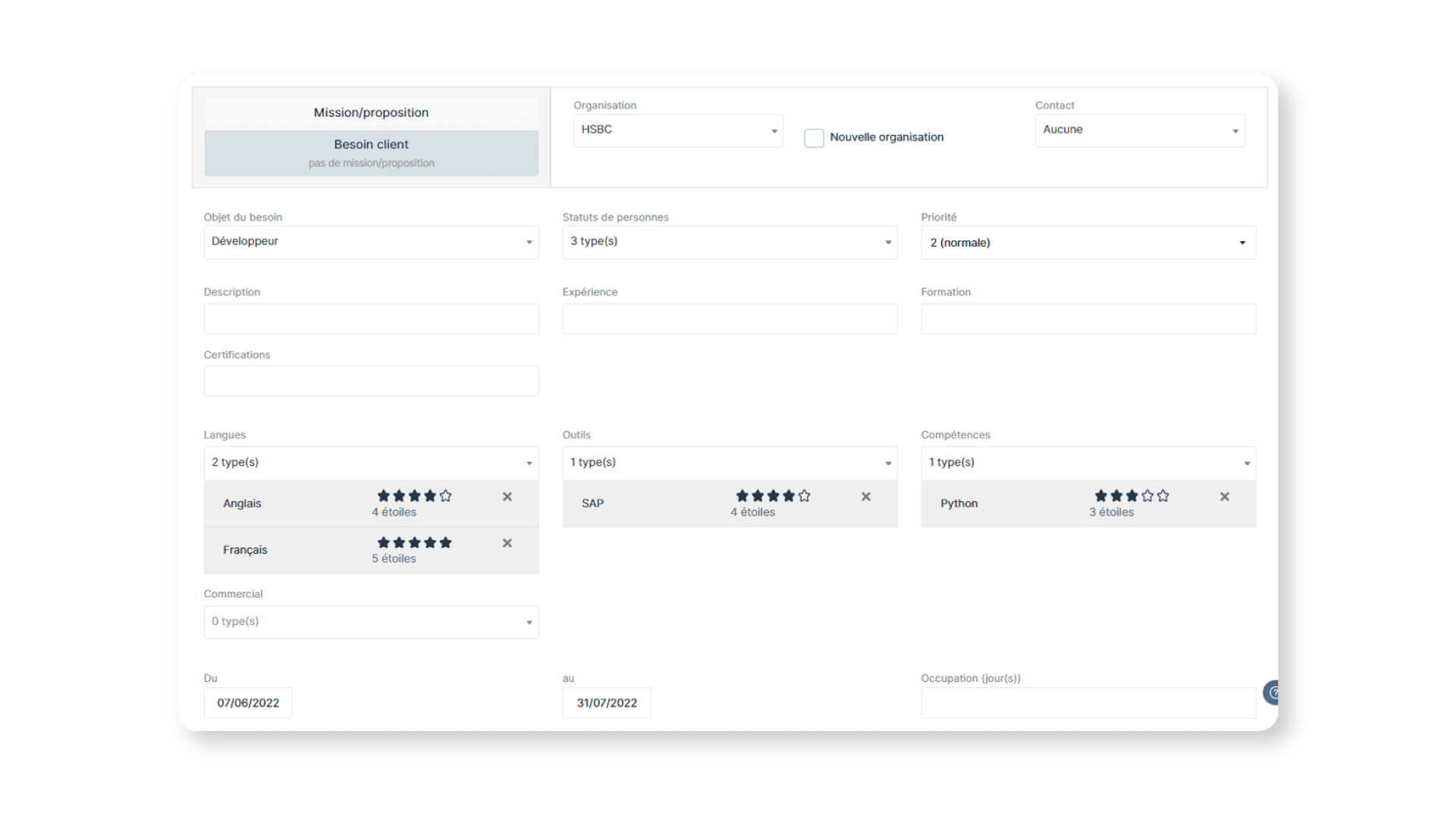
Creating a demand for human resources needs in Stafiz
These needs must then be referred to the people in charge of resource planning. This implies that the workload management software offers a "need creation" feature that allows to indicate:
- competency criteria;
- experience criteria;
- charging period;
- any other custom criteria you need.
Monitoring production and its financial impact
Track future production
By assigning profiles to projects or tasks, you systematically create and update the financial forecast, without necessarily knowing it.
A workload planning tool with financial and reporting functionalities can bring you even more value than just assigning a profile:
- to calculate the progress of a project and the associated turnover;
- calculating the impact of forecasts on profitability;
- to send all the elements to an ERP to update the forecast.
It is then no longer necessary to update the schedule on the one hand, and then to redo the work by updating the remains to be done.
Calculate margins throughout the project
If your workload planner software allows you to set up costs for each user (a salary for an employee, or a cost price for a project-specific supplier), then load management will enable you to calculate future project profitability.
If you can staff subcontractors and indicate their cost, it's even better, because you can predict the production and the future cost of the subcontractor.
💡 Stafiz lets you integrate subcontracting into your workload management to facilitate collaboration between internal and external collaborators.
Other costs can have an impact on your project: product purchases, travel expenses that can't be re-invoiced... To be able to integrate everything and obtain a reliable, real-time financial tracking of your project, make sure that the workload planner solution you have chosen has these features.
You can connect your timesheet tool to your workload management tool to obtain the time already worked and the forecast. If your software, like Stafiz, integrates time management, the calculation will be automatic.
Having a native integration of the realized and the forecast is still ideal to avoid data problems and other bugs that connectors can sometimes cause.
All that remains is to read the project dashboard and check if the projected profitability calculated is close to the goal, or if the project margins are deviating.
Connecting a workload management tool to an ERP system
The updating of projects and the rest to be done must be regularly integrated into the ERP.
Ideally, employees work in a simpler and more intuitive solution such as the planning tool, before the data is automatically sent via API to the ERP.
The finance functions can then take over to prepare the accounting close.
Possible integrations with Stafiz
Questions:
Resource planning software is a tool designed to help companies manage and optimize the allocation of their resources, whether it's teams, time, or equipment.
It allows you to plan tasks, track availability, anticipate needs and coordinate projects in real time. This software provides a holistic view of capabilities, facilitating decision-making to maximize efficiency and reduce assignment conflicts.
When choosing resource planning software, it is important to consider several aspects.
- The specific needs of your company: identify the essential features (e.g. schedule management, reporting, integration with other tools, time entry, etc.).
- Ease of use: Opt for an intuitive interface that drives adoption by your teams.
- Integration with your other software: check compatibility with your ERP, CRM or other software if you don't choose a fully integrated software.
- Cost and ROI: Make sure the software fits your budget while adding real value.
- Quality of customer support and guidance: Choose a provider that offers responsive support and resources to support your users.
